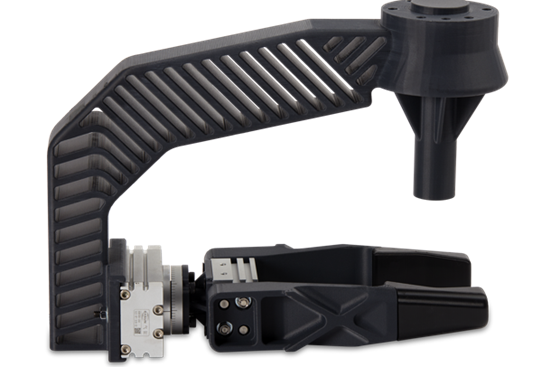You may question whether tools made from thermoplastics are strong enough to replace their metal counterparts. Of course, the answer depends on the specific application, but the reality may surprise you.
FDM Nylon 12CF is a blend of Nylon 12 and chopped carbon fiber, 35% by weight. This combination results in a thermoplastic with the highest stiffness-to-weight ratio of any FDM material, highly suitable as a metal replacement.
Composite materials reinforced with carbon fiber allows for additional stiffness while keeping it much lighter than metal.
ABS-CF10 for example, is a blend of 10% chopped carbon fiber and ABS (acrylonitrile butadiene styrene) plastic. The result is a 3D printing material 50% stiffer and 15% stronger than standard ABS.
Composite 3D printed tooling provide the strength and stiffness needed for many factory floor tooling applications. They offer an effective means to overcome the schedule and cost challenges of conventionally manufactured tooling, which could mean the difference in making your schedule, meeting your budget, and avoiding lost time injuries.
Stratasys' F123CR 3D printers and composite materials outperform the competition, demonstrating 99% uptime and 99% dimensional repeatability performance.
Most manufacturers rely on conventional tooling, usually comprised of machined metal parts that are bolted or welded together. Although they get the job done, 3D printed tools offer additional benefits traditional tooling cannot.
In this solution guide you'll discover how Stratasys is helping to solve everyday problems encountered on the manufacturing floor. Download our guide to understand how it's made possible with flagship carbon fiber compatible 3D printers and other advanced composite materials by Stratasys.


